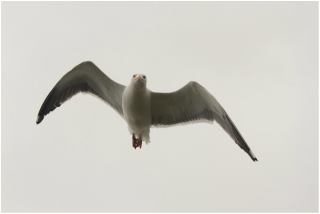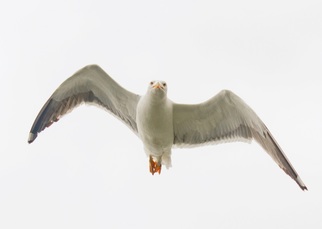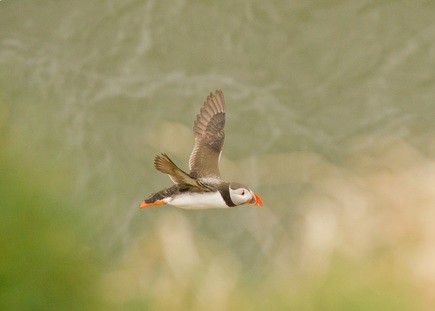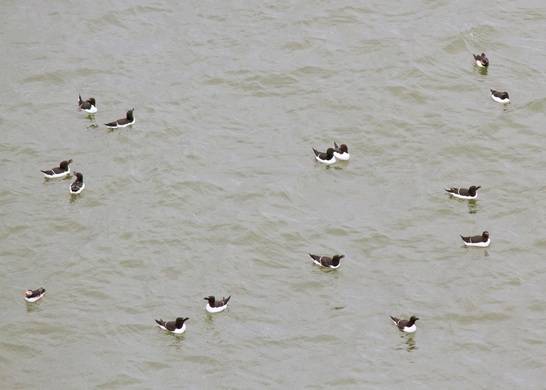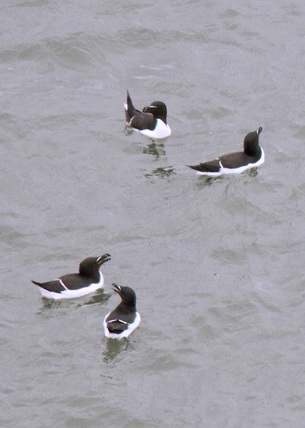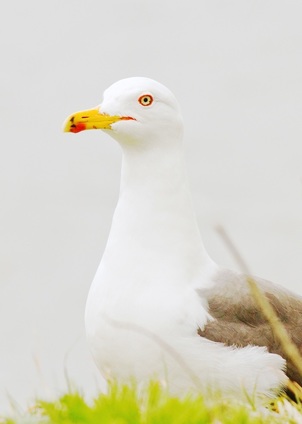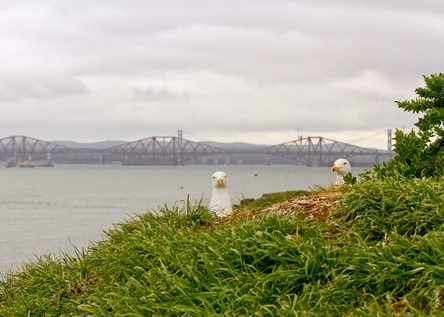Photographing Birds - A little illustrated guide. (Photographs: Inchcolm, April 2015, WIFIE)
FIRSTLY: Check your kit - you'll likely need the longest zoom lens you have. Tripods are great, but birds move fast so I've found that a small, light, monopod is quicker to set down (and can often be left on the camera whilst you're moving around). Often I don't even have that, but I DO have a pretty steady hand...
SECONDLY: Check your camera settings. Don't forget your white balance setting and, if possible, to shoot in RAW (to preserve light and colour detail when editing). I use the setting which saves a RAW image and a JPEG at the same time. Check you have plenty of space on your memory card if using RAW, as the files are large.
Birds are usually far away and moving fast and unpredictably SO:
Fast shutter speed is essential but try not to stop the aperture too wide (low number) or you'll inevitably get the wrong bit of bird in focus. For these reasons good light is very important (my favourite shots often have fuzzy backgrounds from wider apertures but you CAN'T necessarily plan for this). If you prioritise shutter speed you can always edit this:
FIRSTLY: Check your kit - you'll likely need the longest zoom lens you have. Tripods are great, but birds move fast so I've found that a small, light, monopod is quicker to set down (and can often be left on the camera whilst you're moving around). Often I don't even have that, but I DO have a pretty steady hand...
SECONDLY: Check your camera settings. Don't forget your white balance setting and, if possible, to shoot in RAW (to preserve light and colour detail when editing). I use the setting which saves a RAW image and a JPEG at the same time. Check you have plenty of space on your memory card if using RAW, as the files are large.
Birds are usually far away and moving fast and unpredictably SO:
Fast shutter speed is essential but try not to stop the aperture too wide (low number) or you'll inevitably get the wrong bit of bird in focus. For these reasons good light is very important (my favourite shots often have fuzzy backgrounds from wider apertures but you CAN'T necessarily plan for this). If you prioritise shutter speed you can always edit this:
to this:
But you can't edit this (too slow - missed the best composition AND it's fuzzy):

However don't delete photos until you've seen them on a big screen - the shot you thought was lost might be salvageable (oh, no! there's grass in the way...oh wait, that still works!):
Use a lot of patience and put yourself in the right place to see the type of birds you're after (ie if you're on a beach don't waste time looking for eagles - focus on the shore birds present). Use common sense to not scare them away (no shouting/running etc).
The joy of shooting digitally is that you can quickly take a lot of shots at a variety of settings - keep looking through the viewfinder (stay focused) to ensure you get the shot when the bird does something photogenic/moves into the right composition. If in doubt press the shutter! With practice you will have fewer "dud" photos to delete, but it's worth deleting a LOT to ensure you get the one, good, photo.
Composition:
Try to remember composition whilst taking the photograph - but always remember that a lot of changes can be done in editing (deciding the final crop). Often you'll be quite far away and taking a succession of very quick photos. Composition is a very personal thing. One photo can be cropped any number of ways. For example:
This:
The joy of shooting digitally is that you can quickly take a lot of shots at a variety of settings - keep looking through the viewfinder (stay focused) to ensure you get the shot when the bird does something photogenic/moves into the right composition. If in doubt press the shutter! With practice you will have fewer "dud" photos to delete, but it's worth deleting a LOT to ensure you get the one, good, photo.
Composition:
Try to remember composition whilst taking the photograph - but always remember that a lot of changes can be done in editing (deciding the final crop). Often you'll be quite far away and taking a succession of very quick photos. Composition is a very personal thing. One photo can be cropped any number of ways. For example:
This:
Could also become this:
There is a trend at the moment to take very close-up photos (or at least to crop very close). This can show beautifully the crispness of the photograph and show off the photographer's skills nicely:
But personally I prefer to see a bit more of the context/habitat the bird is in - I think this often allows for a bit more character to come through, and shows that you understand the birds a bit better:
Finally - don't be put off by not being on an amazing tropical island surrounded by rare species. Even the humble blackbird or starling can make a beautiful photo. Don't discriminate - photograph whatever bird is present!

